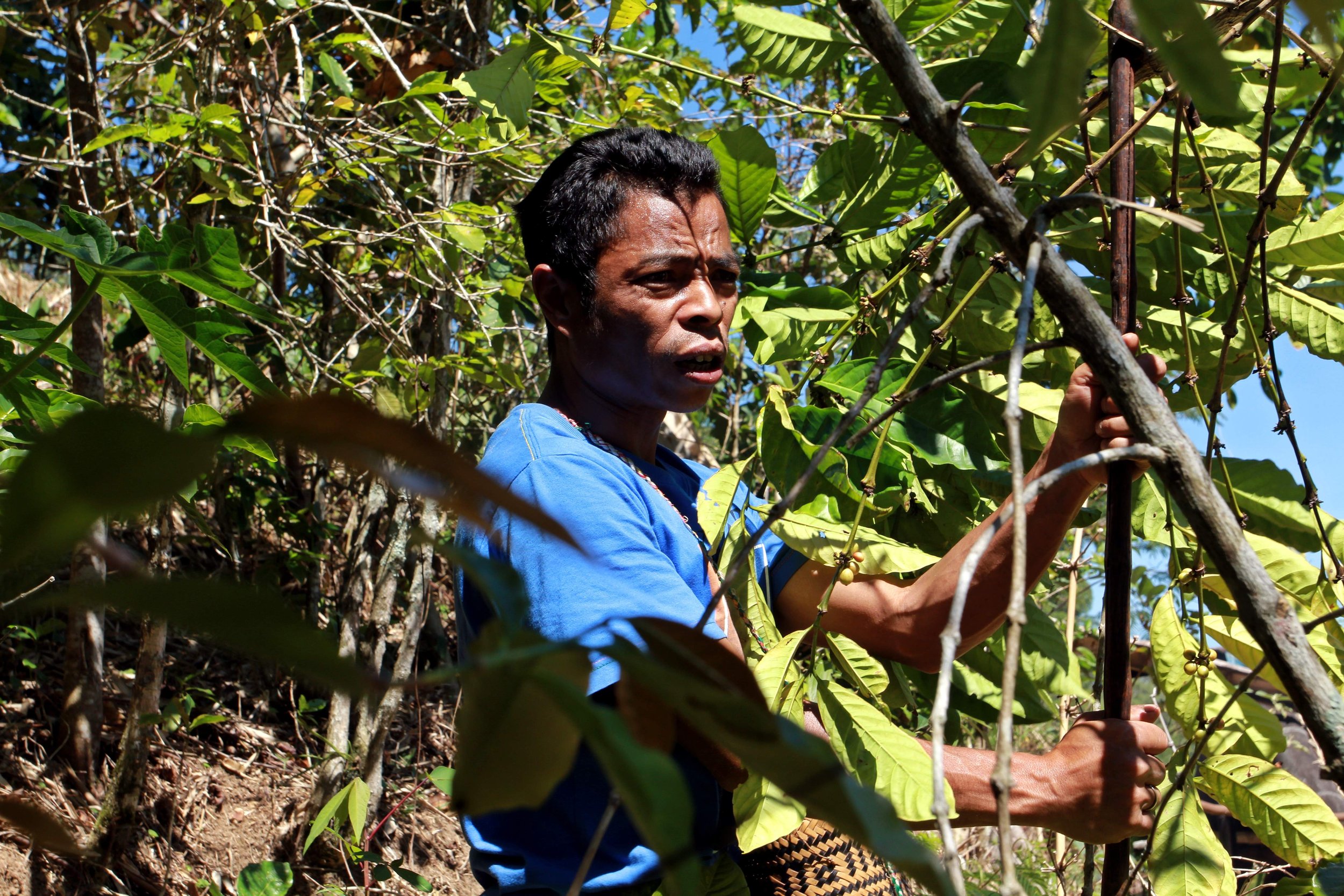Mother nature hasn’t been kind to many coffee growers in Indonesia these last few years. The effect of climate change and freak weather patterns has never felt so impactful and detrimental to many livelihoods in coffee.
Case in point, the year 2022 was the second wettest year ever recorded in Indonesian history. The Indonesian meteorology agency recorded 129% more precipitation than the normal average expected for a normal year. The result was higher intensity rain, a prolonged wet season and, in some areas, the absence of a dry season altogether. Some of these areas coincidently are coffee growing origins that we work closely with.
Our farmer partners in Flores, Toraja, and Central Java, to name a few, all reported their struggles and predicament in facing unpredictable rain affecting their coffee harvest. Their stories were not pretty.”
Farmer from Flores, one of the most affected areas this year.
What happened?
Last year, Indonesia recorded an average rainfall level of 2500 mm. In general, coffee tends to produce well in areas of moderate average rainfall of around 1400-1800 mm. Less than that range coffee plants will lack sufficient nutritions to grow but higher than that, the risks associated with normal coffee production also increases.
Higher than normal levels of rainfall could affect coffee production in more ways than one. For example, high intensity rain coupled with heavy storms especially early in the harvest cycle could destroy many flower blooms in the coffee plants. Flower blooms are important indicators of coffee yields because they turn into coffee fruits after the pollination phase. In short, more damaged bloom will result in more damaged coffee.
This blooming catastrophe was what happened in many parts of Toraja. Simon To’pa, a farmer in Buntu Ledo, told us that a heavy storm in early 2022 had brought hardships there. “We had many landslides, mud falls, erosions at that time,” pak Simon told us “..and the storm just destroyed our coffee flowers. Many of our plants were also flattened by fallen and flying objects''. Pak Simon and friends had it quite difficult for them, they reported a drop in harvest up to more than 60% compared to the previous year.
Not only quantity, but higher rainfall also affects the quality of coffee harvested. Lodovikus, head of ASNIKOM coop in Flores, told us “many of our coffee fruits were over-ripened too quickly in the trees. It will certainly ripen faster than we can anticipate in pickings because we could only do so much with our hands.”. As a result, some of these coffee were presented with higher than usual over-fermented beans and greatly reduced sweetness.
Adding to the predicaments above, unpredictable heavy rain also posed a challenge in drying coffees. Many parts of Indonesia use a traditional open air drying method that relies on the sun for drying power. Unfortunately, many farmers and processors cannot rely on their past experiences for guidance, as the weather pattern was so unreliable that it was not uncommon to rain continuously for several days in peak dry season months of July and August.
“If we can’t predict when the rain will come, we can’t risk drying big batches of coffee out in the open”, said Cahyo, a processor and owner of First Light Coffee in Central Java. But keeping semi-dried coffee in bags also posed its own risks. Wet coffee that was temporarily stored before fully dried has a very big chance to be exposed to humidity, insects, and fungi, among other things. Therefore many farmers faced “damned if you do, damned if you don’t” situation in drying coffee properly because of it.
““If we can’t predict when the rain will come, we can’t risk drying big batches of coffee out in the open””
Approaching rain in Flores.
What could be done.
Scientific wisdom has bare evidence that climate change has indeed accelerated. For many coffee growers and other farmers in general these are very bad times and even worse going forward. It’s not a hyperbole to suggest that we are all like passengers of an airplane that is going down.
However grim it may be, growers and farmers are one of the world’s oldest professions. They thrive and survive through adaptation and sheer ingenuity. We are collaborating with our coffee growing partners to make sure we could ride the storm better in the future, literally and figuratively.
In Toraja, we believe that this is the time for designing a climate adaptation agroforestry model. An agroforestry model that protects from land erosion, improves the weather defense system, and introduces biodiversity into the coffee growing areas. The aim is to increase the population of bees for flower pollination as well as protecting it from heavy winds.
Meanwhile efforts have been put in place to assist our farmers and processors in Flores and Java in developing a weather-proof drying system. We believe the introduction of drying domes and improvement in harvesting standard operating procedures (SOPs) based on better statistics calculation could help our partners in mitigating the effects of weather in time of harvest.
However small these steps may be, it still needs collaborative efforts and support to achieve. Otherwise there might not be much future in coffee for many of our grower partners in the face of future storms.


